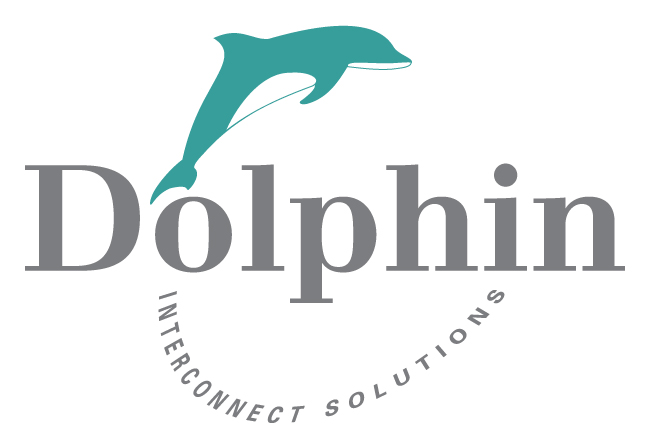For users of :SISCI, SuperSockets, IPoPCIe
Linux version
Dolphin Interconnect Solutions
This document describes the installation and usage of Dolphins PCI Express software stack (eXpressWare) version 5.19.x in combination with Dolphin MX interconnect hardware.
Copyright © 2022 Dolphin Interconnect Solutions
March 8th, 2022
Table of Contents
- Abstract
- 1. Introduction & Overview
- 1. Who needs a PCI Express Network?
- 2. eXpressWare
- 3. Dolphin PCI Express PX Adapter cards
- 4. Dolphin PCI Express MX Adapter cards
- 5. Dolphin PCI Express IX Adapter cards
- 6. Dolphin PCI Express Switches
- 7. PCI Express Cables
- 8. Supported OEM hardware
- 9. PCI Express networking basics
- 10. Contents of this Document
- 11. Terminology
- 12. Support
- 2. Quick Installation Guide
- 3. Requirements and Planning
- 4. Initial Installation
- 1. Installation Overview
- 2. Software Installation
- 2.1. Overview
- 2.2. Starting the Software Installation
- 2.3. Post installation
- 2.4. Working with the Dolphin Network Configurator, dis_netconfig
- 2.5. Cluster Cabling
- 2.6. Finalising the Software Installation
- 2.7. Handling Installation Problems
- 2.8. Interconnect Validation using the management GUI
- 2.9. Interconnect Validation using the command line
- 2.10. Making Cluster Application use PCI Express
- 5. Update Installation
- 6. Manual Installation
- 7. Interconnect Maintenance
- 8. Configuring the adapter card
- 9. Firmware upgrade
- 10. SISCI API
- 1. SISCI Documentation and resources
- 2. Enable applications to use the SISCI API
- 3. How to compile your own SISCI application
- 4. SISCI API Demo and Example programs
- 4.1. SISCI API Example programs
- 4.1.1. shmem
- 4.1.2. memcopy
- 4.1.3. interrupt
- 4.1.4. data_interrupt
- 4.1.5. intcb
- 4.1.6. lsegcb
- 4.1.7. rsegcb
- 4.1.8. dma
- 4.1.9. dmacb
- 4.1.10. dmavec
- 4.1.11. rpcia
- 4.1.12. smartio_example
- 4.1.13. reflective_memory
- 4.1.14. reflective_device
- 4.1.15. reflective_device_receive
- 4.1.16. reflective_write
- 4.1.17. probe
- 4.1.18. query
- 4.1.19. cuda
- 4.2. SISCI API demo and benchmarks programs
- 11. Dolphin PCI Express TCP/IP Driver
- 12. SuperSockets
- 13. SmartIO
- 14. Transparent Board Management
- 15. Advanced Topics
- 16. FAQ
- A. Self-Installing Archive (SIA) Reference
- 1. SIA Operating Modes
- 2. SIA Options
- 2.1. Node Specification
- 2.2. Installation Path Specification
- 2.3. Installing from Binary RPMs
- 2.4. Enforce Installation
- 2.5. Configuration File Specification
- 2.6. PCIe Link width
- 2.7. SISCI
- 2.8. SISCI Development package
- 2.9. eXpressWare CUDA® integration
- 2.10. eXpressWare Transparent Board Management
- 2.11. eXpressWare SmartIO
- 2.12. SuperSockets
- 2.13. Batch Mode
- 2.14. Non-GUI Build Mode
- 2.15. Software Removal
- B.
dis_adminReference - C. Configuration Files
- D. Platform Issues and Software Limitations
- E. eXpressWare License text
List of Figures
- 4.1. Cluster Edit dialog of dis_netconfig
- 4.2. Main dialog of dis_netconfig
- 4.3. Node dialog of dis_netconfig
- 4.4. Dolphin dis_admin GUI - Connect to Network Manager
- 4.5. Dolphin dis_admin GUI - Representation of topology
- B.1. Fabric has FAILED due to dead Cluster Nodes
- B.2. Options in the Admin menu
- B.3. Options in the Cluster menu
- B.4. Options in the Node menu
- B.5. Cluster configuration in dis_admin
- B.6. Advanced settings for a Cluster Node
- B.7. Result of running cable test on a good cluster
- B.8. Result of cable test on a problematic cluster
- B.9. Result of fabric test without installing all the necessary rpms
- B.10. Result of fabric test on a proper fabric
List of Tables
- B.1. Node or Adapter State
- B.2. Link State
